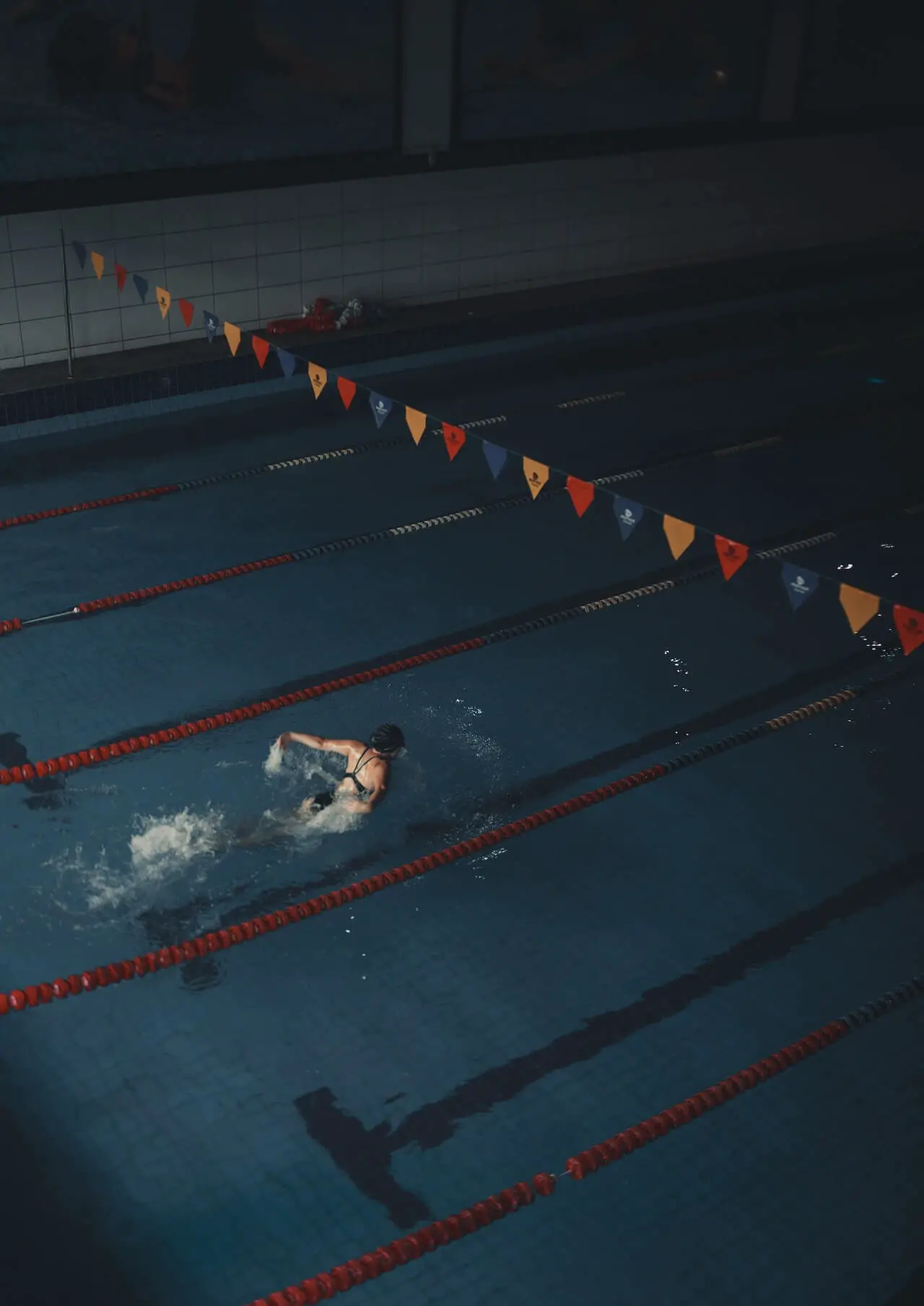It makes total sense why swimming outdoors is dangerous during a thunderstorm. Well, what about in an indoor pool? Contrary to common perception, swimming in an indoor pool during a thunderstorm isn’t entirely safe.

While indoor pools offer a greater degree of safety compared to their outdoor counterparts, you should still get out of the pool just to be safe. The main reason is that lightning can travel through a building’s electrical and plumbing systems. If lightning strikes the building or nearby structures, the electrical current could reach the pool.
In this article, we will delve deeper into these risks, shedding light on why swimming during a thunderstorm isn’t advisable—even in an indoor pool.
Risks of Swimming in an Indoor Pool During a Thunderstorm
Lightning Strikes and Electrocution
Lightning doesn’t discriminate between indoor and outdoor settings. One may think that being inside a building provides complete protection, but unfortunately, that’s not always the case. Indoor pools can still present a significant risk during thunderstorms due to the potential for lightning to strike the building or nearby structures.
How does this work? Lightning seeks the path of least resistance to the ground. In modern structures, this is often through the building’s electrical and plumbing systems, both of which are typically metallic and thus highly conductive.
If lightning strikes a building, the electric charge can travel along these systems and potentially reach the pool. The pool water can act as a conductor, too, given its impurities and inherent ions.
Therefore, if you are swimming during a thunderstorm, the water can transmit the electric charge from a lightning strike to you, resulting in electrocution. Though it is statistically unlikely to occur, if it should, it would be a life-threatening scenario.
Failure of Electrical Equipment
When you think about swimming, you might not immediately think about the role that electrical equipment plays. However, a variety of equipment ensures the pool is safe, clean, and comfortable to use – all powered by electricity.
During a thunderstorm, there’s a high risk of power surges or power outages which can overload and burn out electrical equipment. Imagine this happening to the pool’s lighting system. Suddenly, you could find yourself swimming in darkness.
Moreover, consider the pool’s water filtration and cleaning systems. These systems are vital for maintaining water hygiene and clarity. If a power surge burns these out or a power outage shuts them down, the water’s cleanliness can quickly deteriorate. This may not cause an immediate risk, but extended swimming in such conditions could lead to health issues.
Additionally, the disruption of heating systems can rapidly change the water temperature. An abrupt drop in temperature may not only be uncomfortable but also potentially cause physiological shock.
Damage to the Building Structure
Another significant risk involves the very structure that houses the indoor pool. Severe thunderstorms can bring high winds, lightning strikes, and even hail – all of which can potentially damage buildings.
Structural components of the building, such as roofing materials, windows, or load-bearing walls, could be compromised by a particularly strong storm or direct lightning strike. Not only could this lead to leaks or drafts, but in extreme cases, there could be a risk of partial or total structural collapse. Imagine swimming and suddenly being showered with shards of glass from a shattered window, or worse, being inside when a section of the roof gives way.
Moreover, even less severe structural damage could pose risks. Broken windows or damaged walls could allow the storm’s effects inside, including wind, rain, and potentially hail. This could lead to wet, slippery surfaces, increasing the risk of slips and falls when evacuating or moving around the pool area.
Frequently Asked Questions
What should you do if you’re in an indoor pool when a thunderstorm starts?
The best and most immediate precaution is to exit the pool and move to a safe, enclosed area away from windows, doors, and any electrical equipment.
Avoid touching any electrical equipment, including corded phones. Cordless phones and mobile devices are safe to use. Also, keep away from sinks, baths, and faucets as they are connected to plumbing, which can conduct electricity.
If you’re in a public facility, follow the instructions of the staff or the facility’s emergency protocols. Be calm and cooperative to ensure everyone’s safety.
What is the protocol of most public indoor pools during a thunderstorm?
While the specific protocol can vary from place to place, most public indoor pools follow safety guidelines that include clearing the pool and nearby wet areas at the first sign of a thunderstorm. They usually use the “30 minutes rule,” which means the pool is kept clear for at least 30 minutes after the last observed thunder or lightning.
Additionally, many facilities have secure, designated areas where patrons can stay until it is safe to return to the pool.
Can I rely on pool staff to manage my safety during a thunderstorm?
While pool staff and lifeguards are trained to manage a variety of situations, including weather emergencies, it’s essential that all individuals take personal responsibility for their safety. During a thunderstorm, you should immediately heed any instructions given by pool staff or lifeguards, such as exiting the pool and moving to a designated safe area.
However, if for any reason staff or lifeguards do not instruct you to exit the pool during a thunderstorm, you should take the initiative to do so yourself and inform others if possible. Safety during a thunderstorm requires awareness and responsible action from everyone present.
Sources:
- https://www.hubbardswim.com/blog/post/swimming-safety-when-its-stormy
- https://www.aquaticsintl.com/facilities/management-operators/when-lightning-strikes_o
- https://www.earthnetworks.com/blog/indoor-pools-and-lightning/
- https://www.nrpa.org/parks-recreation-magazine/2016/may/lightning-safety-and-indoor-pools-to-clear-or-not-to-clear/
- https://pooloperationmanagement.com/swimming-during-a-thunderstorm/
- https://www.cdc.gov/disasters/lightning/faq.html#fourteen

